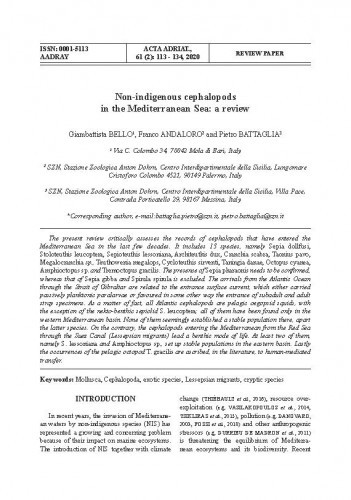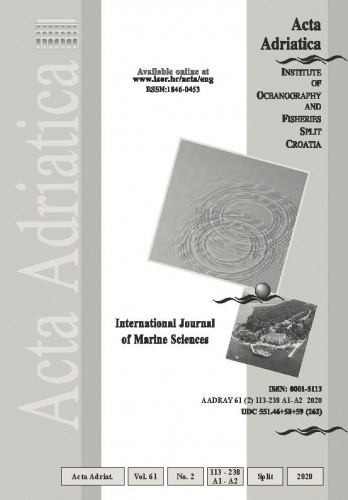The present review critically assesses the records of cephalopods that have entered the Mediterranean Sea in the last few decades. It includes 13 species, namely Sepia dollfusi, Stoloteuthis leucoptera, Sepioteuthis lessoniana, Architeuthis dux, Cranchia scabra, Taonius pavo, Megalocranchia sp., Teuthowenia megalops, Cycloteuthis sirventi, Taningia danae, Octopus cyanea, Amphioctopus sp. and Tremoctopus gracilis. The presence of Sepia pharaonis needs to be confirmed, whereas that of Sepia gibba and Spirula spirula is excluded. The arrivals from the Atlantic Ocean through the Strait of Gibraltar are related to the entrance surface current, which either carried passively planktonic paralarvae or favoured in some other way the entrance of subadult and adult stray specimens. As a matter of fact, all Atlantic cephalopods are pelagic oegopsid squids, with the exception of the nekto-benthic sepiolid S. leucoptera; all of them have been found only in the western Mediterranean basin. None of them seemingly established a stable population there, apart from the latter species. On the contrary, the cephalopods entering the Mediterranean from the Red Sea through the Suez Canal (Lessepsian migrants) lead a benthic mode of life. At least two of them, namely S. lessoniana and Amphioctopus sp., set up stable populations in the eastern basin. Lastly the occurrences of the pelagic octopod T. gracilis are ascribed, in the literature, to human-mediated transfer.; U ovom radu autori kritički procjenjuju nalaze glavonožaca koji su ušli u Sredozemno more u posljednjih nekoliko desetljeća, što uključuje 13 vrsta, a to su: Sepia dollfusi, Stoloteuthis leucopte-ra, Sepioteuthis lessoniana, Architeuthis dux, Cranchia scabra, Taonius pavo, Megalocranchia sp., Teuthowenia megalops, Cycloteuthis sirventi, Taningia danae, Octopus cyanea, Amphioctopus sp. i Tremoctopus gracilis. Prisutnost vrste Sepia pharaonis treba biti potvrđena, dok je prisutnost Sepia gibba i Spirula spirula isključena. Dolasci vrsta iz Atlantskog oceana kroz Gibraltarski tjesnac povezani su s ulaznom površinskom strujom koja je nosila pasivno planktonske paralarve ili je na neki drugi način favorizirala ulaz subadultnih i odraslih zalutalih primjeraka. Zapravo su svi atlantski glavonošci pelagične lignje, s izuzetkom nekto-bentoskog sepiolida S. leucoptera. Čini se da nijedna vrsta od navedenih tamo nije uspostavila stabilnu populaciju, osim potonje navednih vrsta. Naprotiv, glavonošci koji ulaze u Sredozemno more iz Crvenog mora kroz Sueski kanal (lesepsijski migranti) vode bentoski način života. Ipak, dvije vrste S. lessoniana i Amphioctopus sp., uspostavile su stabilne populacije u istoč-nom dijelu. Konačno, pojave pelagične hobotnice T. gracilis pripisuju se, u literaturi, prijenosu posredovanim antropogenim utjecajem.
Sažetak

 Acta Adriatica : 61,2(2020) / glavni urednik Jakov Dulčić.
Acta Adriatica : 61,2(2020) / glavni urednik Jakov Dulčić.